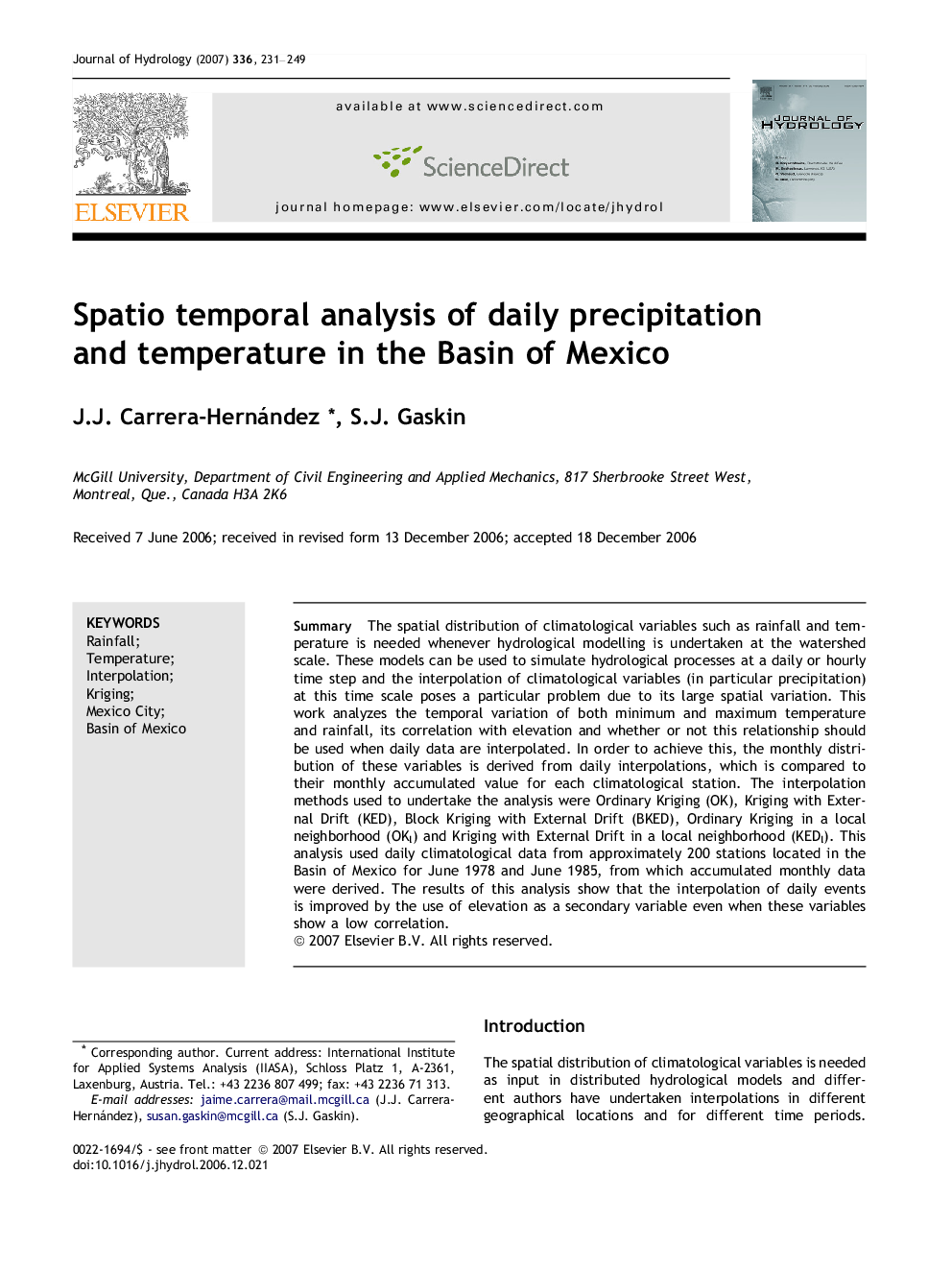| Article ID | Journal | Published Year | Pages | File Type |
|---|---|---|---|---|
| 4580054 | Journal of Hydrology | 2007 | 19 Pages |
SummaryThe spatial distribution of climatological variables such as rainfall and temperature is needed whenever hydrological modelling is undertaken at the watershed scale. These models can be used to simulate hydrological processes at a daily or hourly time step and the interpolation of climatological variables (in particular precipitation) at this time scale poses a particular problem due to its large spatial variation. This work analyzes the temporal variation of both minimum and maximum temperature and rainfall, its correlation with elevation and whether or not this relationship should be used when daily data are interpolated. In order to achieve this, the monthly distribution of these variables is derived from daily interpolations, which is compared to their monthly accumulated value for each climatological station. The interpolation methods used to undertake the analysis were Ordinary Kriging (OK), Kriging with External Drift (KED), Block Kriging with External Drift (BKED), Ordinary Kriging in a local neighborhood (OKl) and Kriging with External Drift in a local neighborhood (KEDl). This analysis used daily climatological data from approximately 200 stations located in the Basin of Mexico for June 1978 and June 1985, from which accumulated monthly data were derived. The results of this analysis show that the interpolation of daily events is improved by the use of elevation as a secondary variable even when these variables show a low correlation.
